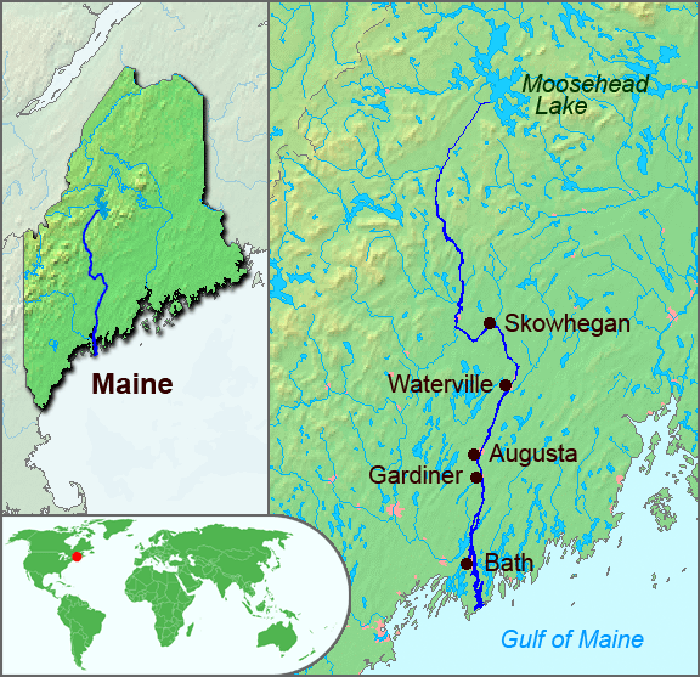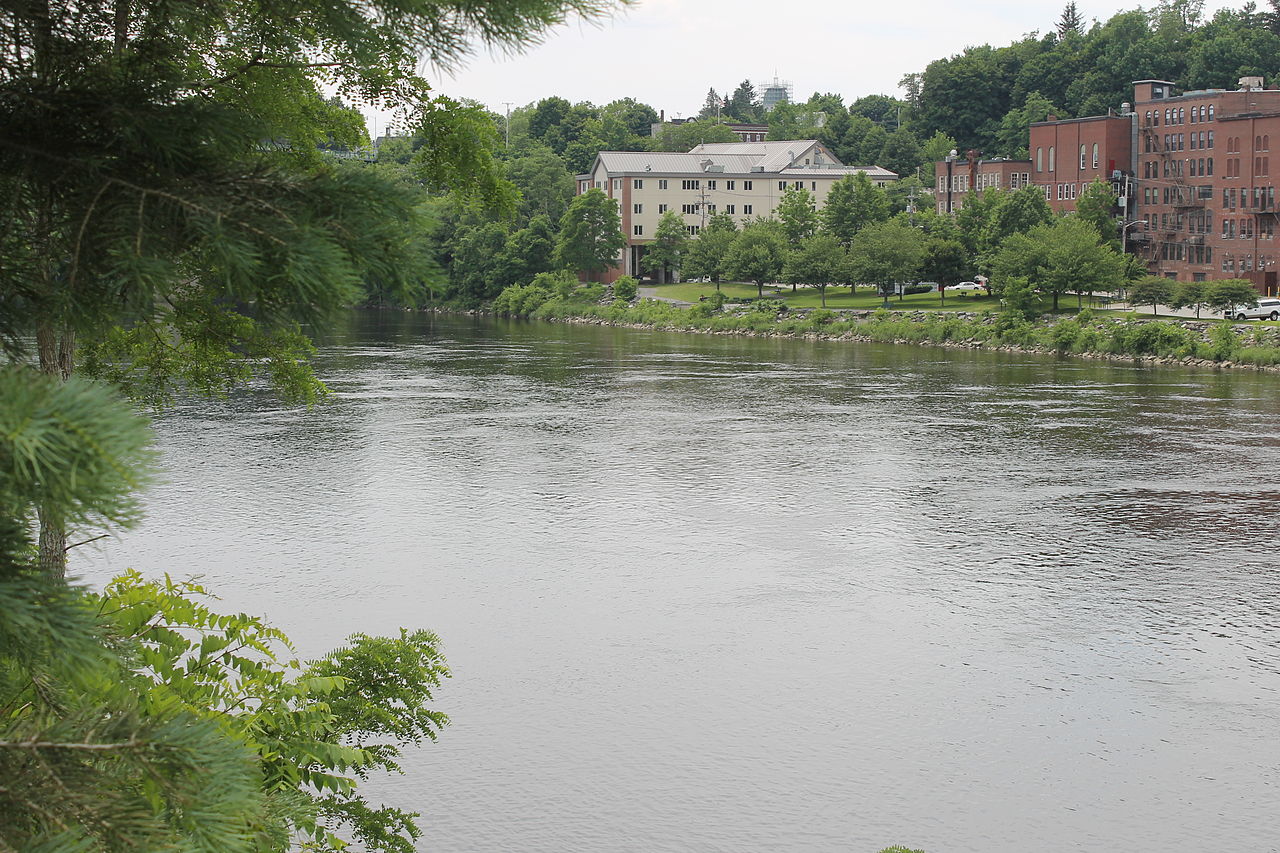
Coming down, the Edwards Dam on the Kennebec River – 1999. Image courtesy of The Natural Resources Council of Maine.
Damn dams that are way past their usefulness should be bulldozed, and spawning fish runs allowed to replace them. Who’s not up with that?
By Skip Clement
[dropcap]T[/dropcap]he original story, 6 Ways to Make Dams Easier to Remove , was written by Katy Neusteter, in October of this year, and a summary of American Rivers 20 years experience freeing rivers from unnecessary dams. Here’s a snapshot of their advice on how to take the dam removal movement to the next level.
The lead up to the story has, perhaps, the most significance in dam removal history in the U.S. And that story is about the Edwards Dam [built in 1837] in Augusta Maine, 40 miles upstream from the Atlantic Ocean
The Edwards Dam coming down in 1999 was significant in many ways
- It was the first removal of a hydroelectric dam by the government against the wishes of the dam owner
- It freed up a 17-mile stretch of the Kennebec River submerged for 162 years.
- The annual run of alewives (a migratory fish essential to the marine food web) was zero. Today, the alewives on their spawning run add 5,000,000 to the food chain.
- It was the first time the federal government ordered a dam removed because its costs outweighed its benefits.
- According to the dam removal database maintained by American Rivers, 1,605 dams have been removed in the U.S. since 1912. Most of these (1,199) have occurred since the removal of Edwards Dam in 1999.
- The year with the most dam removals was 2018 (99 dams removed). 2017 was the second most productive year, with 91 barriers removed.
- Since 1999, those 1,199 dams removed by American Rivers and other groups are all complex infrastructure projects that rarely get accomplished by a single organization.

A commons image.
Factoid:
More than 90,000 dams still block American rivers and streams, many no longer serving their original purpose. Some are drowning hazards, while others damage river health and water quality. With some states, like Pennsylvania, removing 25 to 35 outdated dams per year while other states remove none.
What will truly make the most significant difference will be making not just some, but hundreds of projects happen – and here’s how
Strong leadership: You need influential leaders at the state level to break down the barriers to removing dams. Several states, including Massachusetts, Pennsylvania, and New Hampshire, have staff dedicated to removal projects — and a lot more projects get done in those places.
Incentives for dam owners: An effective dam safety office must recommend dam removal as a good option for unsafe dams and facilitate dam removal projects.
Funding: It takes money to do the assessments, designs, and implementation necessary to remove dams. Financial support must be available for multiple years and must cover everything from feasibility to construction.
Regulators: State and federal regulators generally view dam removal as a positive approach. But because taking out a dam changes the local environment in the short term, regulators struggle to fit dam removal projects into regulations that were designed to reduce change to the environment. Regulators must recognize the leeway available within most existing regulations to allow for projects that result in long-term benefits.
Well-trained project managers: There must be enough project managers to shepherd all projects through the challenging and involved process sustainably.
Momentum: As we like to say, “Every project makes the next project easier.” The more projects you do, the more engineers, regulators, and agencies understand the process, and the more contractors know how to work in rivers.

2019 – Kennebec River at Augusta, Maine. A commons image.

